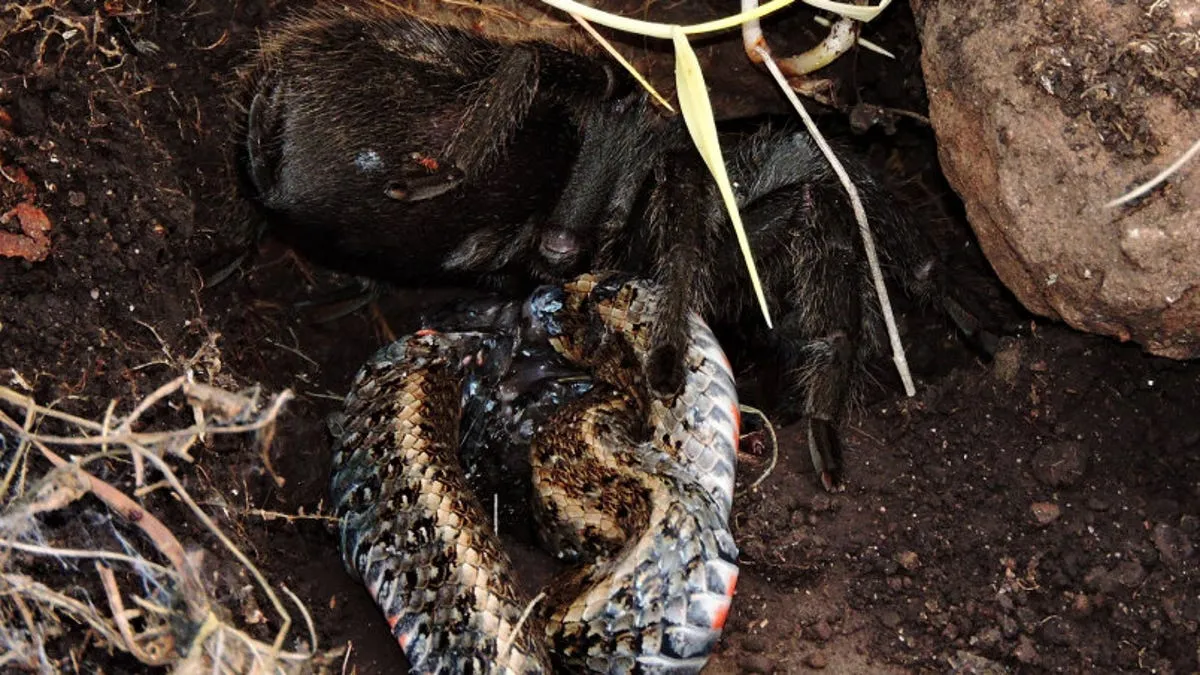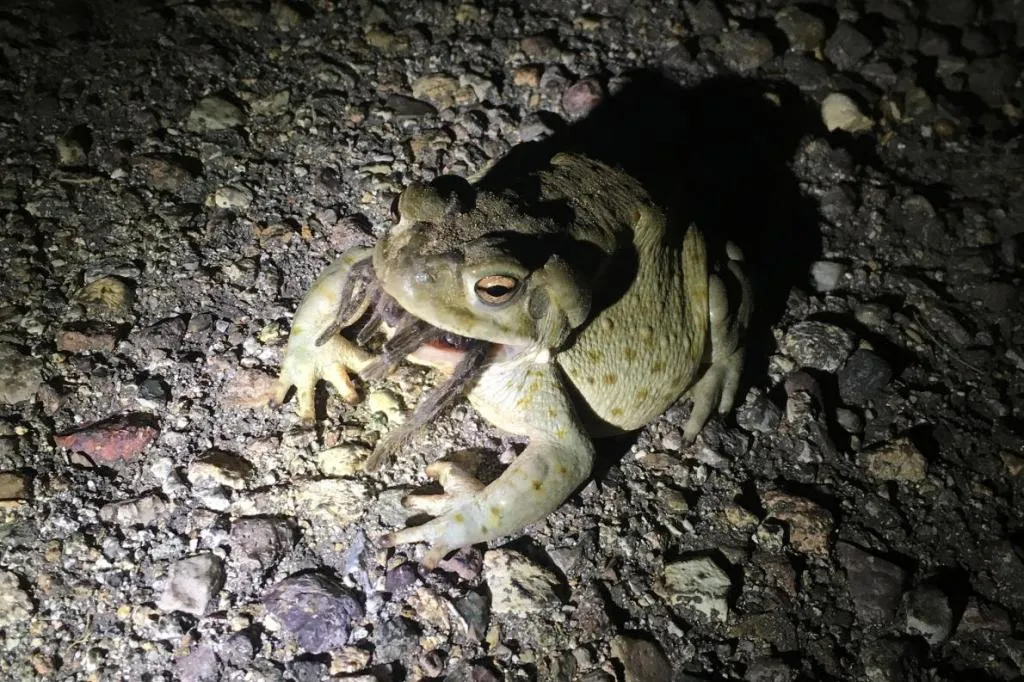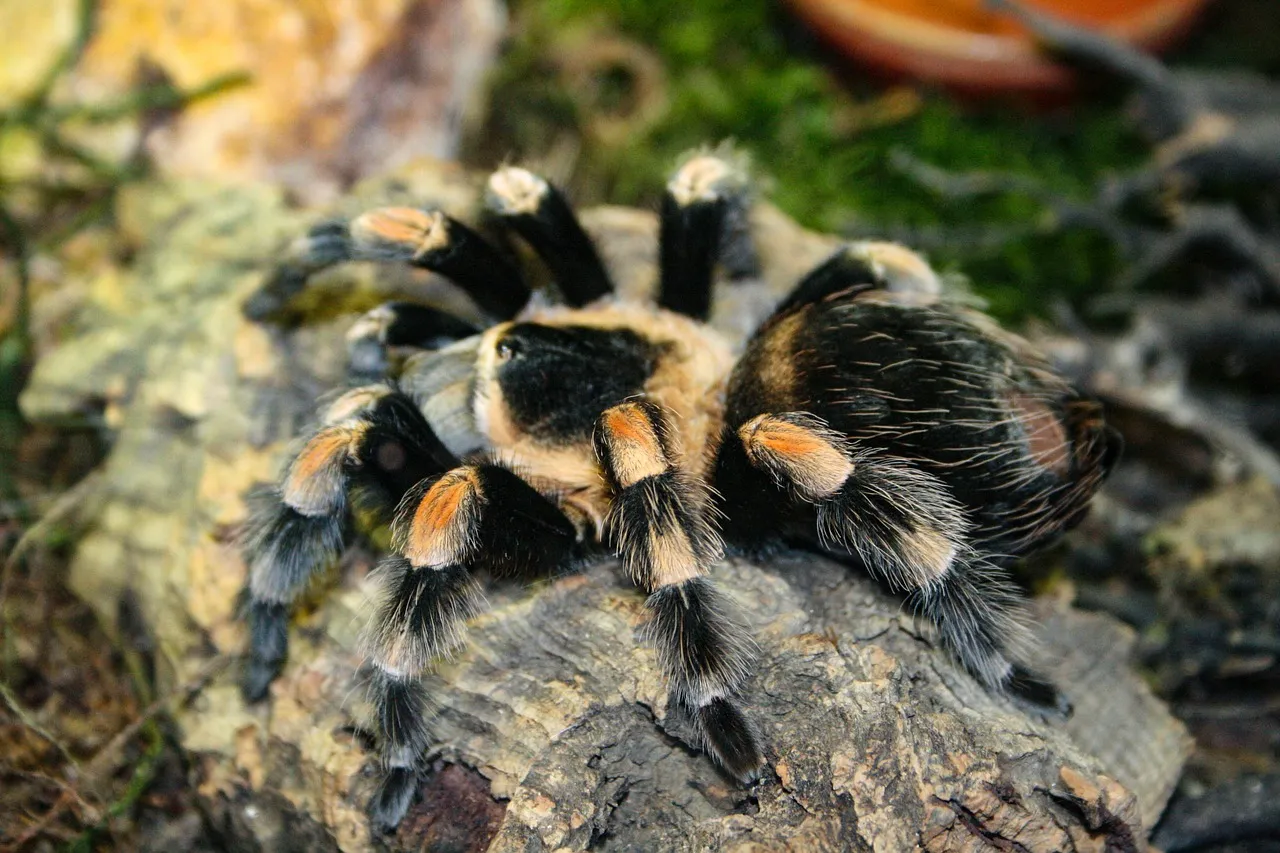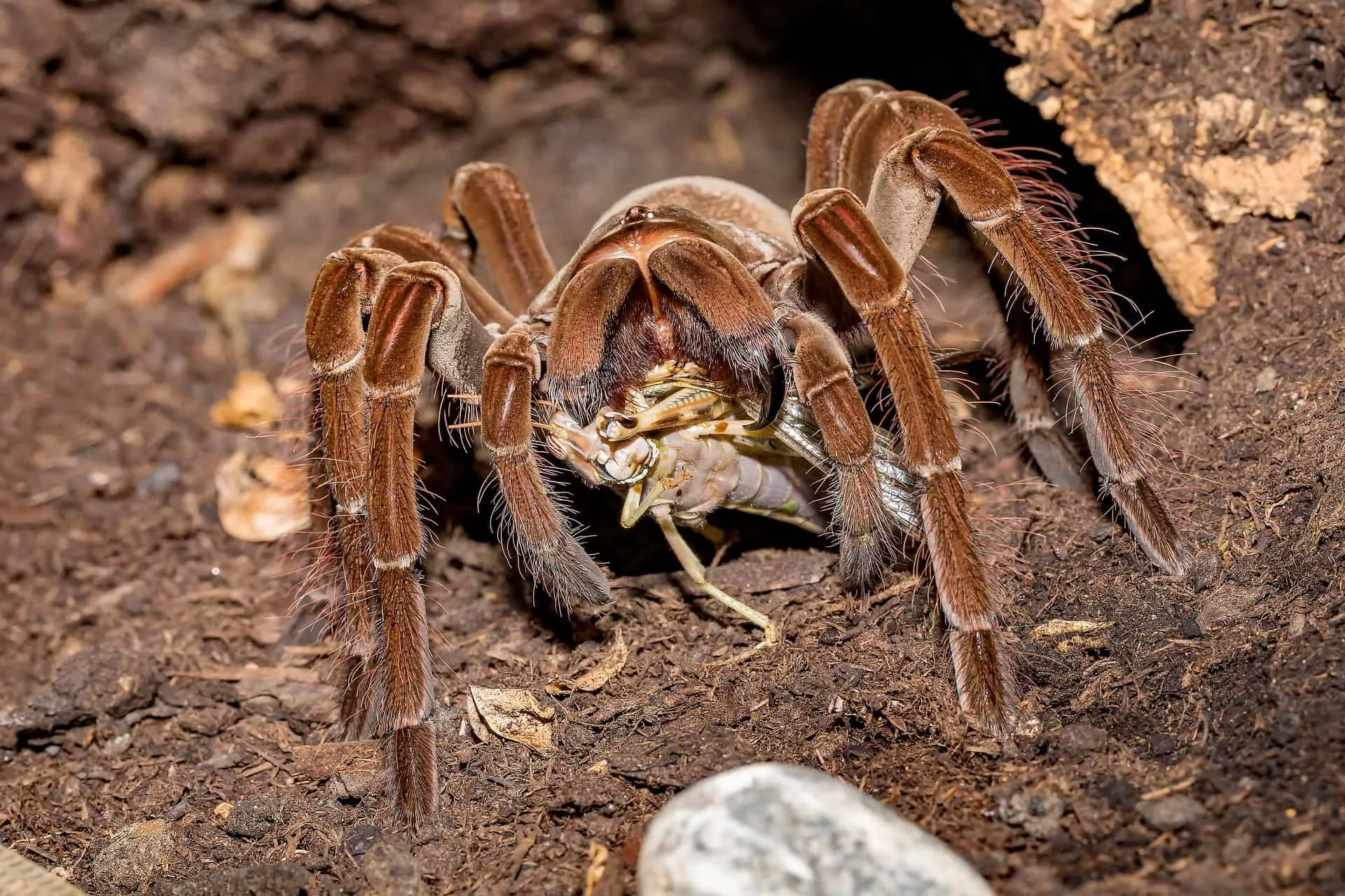The world of tarantulas is often shrouded in mystery, and their diets are no exception. These fascinating arachnids are known for their impressive size and hunting prowess, but what exactly do they eat? You might be surprised to learn that the answer to the question ‘Will a tarantula eat a slug?’ isn’t always straightforward. This article delves into the surprising world of tarantula diets, exploring whether slugs are on the menu and what factors influence their feeding habits. Prepare to uncover some shocking facts about these eight-legged predators!
Fact 1 Do Tarantulas Eat Slugs?
The short answer is yes, tarantulas can eat slugs, but it is not a regular part of their diet. In the wild, a tarantula’s food choices are dictated by availability and opportunity. If a slug happens to cross its path, and the tarantula is hungry, it is certainly possible the spider will see the slug as a potential meal. However, the likelihood of this happening depends on various factors, including the size of the tarantula, the size of the slug, and the overall environment. It’s crucial to understand that the tarantula’s diet is more diverse, and slugs aren’t always the preferred meal.
The Natural Diet of Tarantulas
Tarantulas are opportunistic predators, meaning they will eat whatever they can catch and overpower. Their natural diet primarily consists of insects, such as crickets, grasshoppers, and cockroaches. Larger species may also consume small vertebrates, including mice, lizards, and even small birds. The tarantula’s hunting strategy involves ambushing its prey, using its fangs to inject venom that paralyzes and begins to digest the meal. The tarantula then sucks up the liquefied remains, leaving behind only the exoskeleton.
Other Prey in the Tarantula’s Diet

Beyond insects and small vertebrates, tarantulas can also consume other invertebrates. This can include worms, beetles, and other spiders. The specific composition of a tarantula’s diet depends on the species and the environment in which it lives. For example, a tarantula in a tropical rainforest might have access to a wider variety of prey than one living in a drier, more arid climate. They are adaptive hunters, and their diets reflect the availability of food sources in their respective habitats. Remember that the focus is always on seizing the opportunity when it arises.
Fact 2 Why Would a Tarantula Eat a Slug?
Several factors could prompt a tarantula to eat a slug. The most obvious reason is hunger. If a tarantula is hungry and a slug is available, it might seize the opportunity for a meal. Another reason could be the lack of alternative food sources. In environments where insects or other preferred prey are scarce, tarantulas may turn to slugs as a secondary food source. Additionally, the size of the tarantula and the size of the slug play a crucial role. A larger tarantula might be more likely to attack a slug, while a smaller tarantula may find a slug too challenging to handle. It is all about survival and adaptability.
Nutritional Value of Slugs for Tarantulas
Slugs can provide some nutritional value to tarantulas. They contain protein, which is essential for growth and energy. However, the nutritional profile of slugs is not as balanced as that of insects, the tarantula’s primary food source. Slugs have a higher water content, and their exoskeletons are not as easily digestible as those of insects. Therefore, while slugs can be a source of food, they are not an ideal staple diet for tarantulas. They lack the necessary nutrients a tarantula needs to thrive compared to their natural prey.
Potential Risks of Feeding Slugs to Tarantulas

Feeding slugs to tarantulas has potential risks. Slugs can carry parasites and diseases that could be harmful to the tarantula. They may also have ingested pesticides or other toxins, which could be passed on to the spider. Furthermore, the slime produced by slugs can be messy and may interfere with the tarantula’s ability to feed. Therefore, it is generally not recommended to feed slugs to tarantulas, especially if you are unsure of their origin or health. Always prioritize the safety and well-being of your pet tarantula.
Fact 3 The Hunting Behavior of Tarantulas
Tarantulas are primarily ambush predators, relying on stealth and patience to capture their prey. They typically wait in their burrows or hiding places, and they will strike when an opportunity arises. Their hunting techniques involve a combination of sensory perception and physical prowess. Tarantulas have sensitive hairs on their legs called setae, which can detect vibrations in the ground, alerting them to the presence of potential prey. When a suitable target comes within striking distance, the tarantula will lunge forward, using its fangs to inject venom and subdue the prey.
How Tarantulas Locate Slugs
Tarantulas use their senses to locate slugs. They can detect the vibrations produced by slugs moving on the ground, as well as the scent of the slime they leave behind. The tarantula’s eyesight, though not as sharp as some other predators, also plays a role in detecting movement. If a slug happens to wander close to a tarantula’s burrow or hunting territory, the spider is likely to become aware of its presence. The tarantula’s ability to detect the subtle cues given off by potential prey is key to their success as hunters.
The Tarantula’s Hunting Techniques

When a tarantula decides to attack a slug, its hunting techniques come into play. The spider will rapidly move towards the slug, injecting venom with its fangs. The venom contains neurotoxins that paralyze the slug, making it easier for the tarantula to handle. The tarantula may then use its chelicerae (mouthparts) to crush the slug’s body and begin the feeding process. The tarantula’s hunting success depends on the element of surprise and the swiftness of the attack, especially if the slug is much larger than its predator.
Fact 4 The Slug’s Defense Mechanisms
Slugs possess several defense mechanisms to protect themselves from predators, including tarantulas. One of the primary defenses is the production of mucus, or slime. The slime makes them slippery, making it difficult for predators to grasp and hold them. The slime also contains bitter-tasting compounds that can deter potential attackers. Additionally, slugs have the ability to retract their bodies into their shells for protection, making them less vulnerable to direct attacks. They are also nocturnal, meaning they are most active at night when many predators are inactive.
How Slugs Try to Escape Tarantulas
When faced with a tarantula, a slug will try to escape in several ways. The primary method is to crawl away as quickly as possible, hoping to outrun the spider. The slug’s slippery slime helps it to move through the environment, but it also makes it difficult for the tarantula to maintain its grip. Slugs may also try to hide under objects, such as leaves or rocks, to evade the tarantula’s attack. If the slug is cornered, it might try to retract its body into its shell for protection, making itself a less appealing target.
Tarantulas Overcoming Slug Defenses

Despite the slug’s defenses, tarantulas are well-equipped to overcome them. The tarantula’s venom is a potent weapon, quickly paralyzing the slug and giving the spider time to strike. The tarantula’s strong chelicerae allow it to crush the slug’s body, regardless of the slime. Also, the tarantula’s agility and speed enable it to quickly catch and subdue the slug before it can fully escape. Tarantulas are patient hunters, and they are adept at finding ways to overcome prey defenses in order to secure a meal. The element of surprise is often on the tarantula’s side.
Fact 5 Setting Up a Tarantula Habitat
If you are considering keeping a tarantula as a pet, it is crucial to set up a proper habitat. The enclosure should be large enough for the tarantula to move around comfortably. It must also provide appropriate substrate, such as coconut fiber or peat moss, to allow the tarantula to burrow. The habitat should include a water dish for hydration and a hide, such as a piece of bark or a small cave, where the tarantula can feel secure. Maintaining the correct temperature and humidity levels is also essential for the tarantula’s health and well-being. A well-maintained habitat is essential for the tarantula to thrive.
Optimal Conditions for Tarantula Health
Providing the right conditions is key to keeping a tarantula healthy. The enclosure should be kept at a temperature appropriate for the species. Most tarantulas prefer a temperature between 75 and 85 degrees Fahrenheit. Humidity levels also need to be maintained within the appropriate range. This can be achieved by misting the enclosure with water regularly and providing a water dish. Regular cleaning of the enclosure is essential to prevent the buildup of waste and maintain a healthy environment. With proper care and attention, a tarantula can make a fascinating and rewarding pet.
Conclusion

So, will a tarantula eat a slug? The answer is a qualified yes. While not a typical part of their diet, tarantulas can and will eat slugs if the opportunity arises. However, factors such as the tarantula’s size, the slug’s size, and the availability of other food sources play a significant role. Understanding the natural diet and behavior of these fascinating creatures offers insights into their survival strategies. Although slugs might occasionally make it onto the menu, insects and sometimes small vertebrates remain the preferred fare of these incredible arachnids. They are fascinating creatures, and their dietary habits reflect their adaptability and the ever-changing dynamics of their ecosystems. If you’re thinking of getting a tarantula, remember to research its specific dietary needs and provide a safe and enriching environment for it to thrive. Now you know more about the unexpected relationship between tarantulas and slugs!
